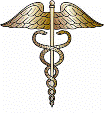
United States Public Health Resources
Date of this Version
2016
Citation
Okoroh EM, Kroelinger CD, Smith AM, et al. US and territory telemedicine policies: identifying gaps in perinatal care. Am J Obstet Gynecol 2016;215:772.e1-6.
Abstract
BACKGROUND: Perinatal regionalization is a system of maternal and neonatal risk-appropriate health care delivery in which resources are ideally allocated for mothers and newborns during pregnancy, labor and delivery, and postpartum, in order to deliver appropriate care. Typically, perinatal risk-appropriate care is provided in-person, but with the advancement of technologies, the opportunity to provide care remotely has emerged. Telemedicine provides distance-based care to patients by consultation, diagnosis, and treatment in rural or remote US jurisdictions (states and territories).
OBJECTIVE: We sought to summarize the telemedicine policies of states and territories and assess if maternal and neonatal risk-appropriate care is specified.
STUDY DESIGN: We conducted a 2014 systematic World Wide Webebased review of publicly available rules, statutes, regulations, laws, planning documents, and program descriptions among US jurisdictions (N=59) on telemedicine care. Policies including language on the topics of consultation, diagnosis, or treatment, and those specific to maternal and neonatal risk-appropriate care were categorized for analysis.
RESULTS: Overall, 36 jurisdictions (32 states; 3 territories; and District of Columbia) (61%) had telemedicine policies with language referencing consultation, diagnosis, or treatment; 29 (49%) referenced consultation, 30 (51%) referenced diagnosis, and 35 (59%) referenced treatment. In all, 26 jurisdictions (22 states; 3 territories; and District of Columbia) (44%), referenced all topics. Only 3 jurisdictions (3 states; 0 territories) (5%), had policy language specifically addressing perinatal care.
CONCLUSION: The majority of states have published telemedicine policies, but few specify policy language for perinatal risk-appropriate care. By ensuring that language specific to the perinatal population is included in telemedicine policies, access to maternal and neonatal care can be increased in rural, remote, and resource-challenged jurisdictions.


Comments
U.S. Government Work